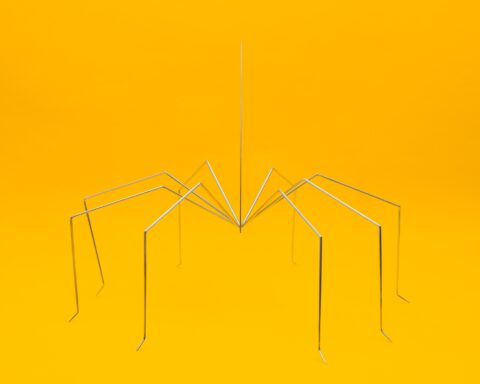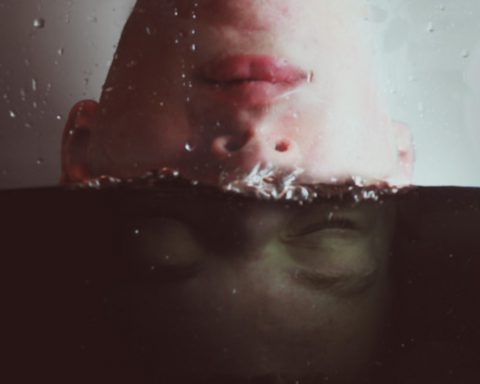Martina Melilli (1987) obtained an MA in Visual Arts at IUAV Venice University (IT) and spent a year studying documentary and experimental cinema at Luca School of Arts, Brussels (BE). She is interested in the representation of the individual and collective imagination in connection with memory and reality as well as the relation between the individual and surrounding space: the movement through this space and the sense of belonging or to be rooted; the connection and the confrontation between the intimate and the universal. She works with video, film, photography and writing, using the promotion of the creative Documentary genre in all its shades as a tool, by organizing workshops and curating (film) exhibitions. According to the medium, collaborative and collective are the forms of work the artist prefers. Her first feature length creative documentary, My home, in Libya, has been produced by Stefilm International, ZDF/ARTE, Rai Cinema with the support of MiBACT, which recognized it of cultural interest. It had its world premiere at the 71st Locarno Film Festival.
Gianluca Gramolazzi: In your earliest pieces you worked with photography, but then you shifted into video. What is the reason of this evolution?
Martina Melilli: My artistic research started with photography and I never abandoned it. When I decided to study at IUAV in Venice, at my first class the professor Stefano Arienti asked me to create an artwork. I didn’t know how to do it and I hoped they would have taught me that. Therefore I began with photography because I really appreciate this medium: I started to take pictures when I was very young, as my father was very passionate about cameras and slides. The turn to video was gradual, when I decide to melt together my early passions: photos and writing. I’ve always written a lot and I love to tell stories, so, combining images and narrative threads, you get into cinema and video. I asked for help from a friend who taught me how to convert analog recoveries into digital ones, because at the time I shot with a little analog camera. It was 2008 when I created my first video. I miss photography a little, by the way, because I can print it and I can touch it, which I cannot do with video.
G.G. Why did you choose documentary?
M. M. I didn’t choose it. From the beginning there wasn’t a setting-up in my videos, because I always pick up from reality. In my first video overall, called Senza Titolo (Honey), there was a simulation of sexual intercourse between a honey jar and a spoon. I figured it out in a moment I was really in love and I was thinking about making love with my boyfriend at the time. I recreated the image as I thought it, nothing more than that. I never used actors or actresses, because I wanted to embed it in reality, where I always discover many absurd stories. Reality has everything I need: I wanted real characters to tell their stories or I want to tell mine, no one could do it better. Moreover, I am interested in History, personal stories and how they intertwine together. So I decided to study documentary in Brussels. I believe that, when you tell what happened in your day or about little things, you make them beautiful and more interesting.
G.G. Your work is a continuous collage between several aspects. What is the meaning you give to collage?
M. M. I like to mix together different mediums and genres, and to find the point of connection between aspects that are so diverse. I hate to label everything because if you do that, you have to leave little aspects aside and to eliminate one thing instead of another. And so, collage gave me the idea to keep everything I need from the place I like or found, from the genre I need, and through the medium, is useful for a message. When you combine different elements, their meaning will change. This is the reason why I like to use archive materials: if there are images that could be decontextualized and recontextualized to create a new meaning, why can’t I use it? Why do I have to create new images? So, this is true for moving images as much as drawings, or photography, or clippings. I think collage is limitless. Considering that documentary is not a truth keeper, collage could give different points of view to allow the viewer to create his/her reality. In this way, collage could link the analog and the digital layer, trying to re-appropriate to our bodies. I don’t want to demonize the digital, as in Black Mirror, but rather underline how we cannot exclude the organic from our life: we are skin, bones and flesh; in our veins run blood, not bytes who speaks in 0,1 language.
G.G. Cinema, as art, is collective, but your work is characterized by remarkable collectivity, as Mum, I’m sorry or My home, in Libya. In this context, what is the role of the artist?
M. M. I love to involve several personalities in the process who could improve the final work. Because of a lack of self-confidence, I do it to nourish myself and to learn from those people. Besides that, I always look for specialists to examine a specific topic, because, as an artist, I just have suggestions. So, collaborative works could give me tools to go deeper in conceiving a film. Cinema is without a doubt a collective art, but my purpose is to collectivize all processes, because there is not an absolute objectivity. In result, I give different points of view which allow me to create something the viewer could experience in a personal way. There is no Truth, no Reality. Furthermore I don’t believe that the role of the artist is diminished by having expertise at work. In art history we could see that all the major artists had a lot of apprentices and assistants in their atelier, who worked beside them. Nowadays, we discuss copyright: who is the creator? Who has the property of the idea? And so on. I believe in the creative commons: the role of the artist is to give his/her point of view and his/her sensibility into an idea, or a message. It couldn’t be diminished because it is collective.
G.G. There is always a limit: borders, seas, the skin. Your pieces investigate them. How do you live with boundaries?
M. M. It’s really hard for me to assume limitations in general, but it is harder to understand why these lines drawn by few bureaucrats in an office should stop movements of people. If we have to look for a limit, we can see high chains of mountain ranges, seas, rivers, but they can always be trespassed. So, geographically, it is hard for me to define a boundary, also linguistically. I created my last film, My home, in Libya, in different languages but it was a limit: to be watched on TV, or in specific nations, it has to be comprehensible. I didn’t think about it. Only skin is an indisputable limit, but if you share it, differences could disappear. Sometimes someone asks me if I am an artist or a director, and I couldn’t figure out why we need to divide everything. We talked about collage as a linguistic medium: I believe in the complementarity of languages. For example, in My home, in Libya the sound score complements the video one, and one is not more important than the other. The sound tells you what the video cannot.
G.G. In your work you analyze the theme of roots and the feeling of belonging. How is it related to you?
M. M. This is the main theme I belong to, as an artist and as a human being. I often wondered about the shape of roots, or what “to be rooted” means and what it means to have roots or not have them. This summer, during a conversation, I understood that I never thought about the ground and its fertility. There are no roots, if there is no ground. And so on, I realized that roots need a specific ground and vice versa. So, if you plant something in an inappropriate ground, it will never grow. I think it is important to talk about roots: as Bauman’s concept, the fluidity of roots have to be interpreted not as a non-existence of them, but as different roots that need different grounds. We need to find our fertile ground.
G.G. Your gaze toward the other is always very kind. Is it an antidote to cynicism?
M. M.Sometimes I think I am very cynical, but that is not the truth. But I would like to be like that. I am a true idealist, because I think that the utopia is a possible reality, not something far away. I am very sad about what is happening in these days, where the hate is overflowing toward the Other: not only as “someone different from me”, but also “something away from me”, such as the environment. But, in the end, I can’t be hopeless, because I believe in the goodness of the world. The tenderness will save us.
G.G. Your future works will be focused on the woman. What do you think about the new feminist wave? What does it miss?
M. M. First of all, I am a woman and my works start from me, sometimes they are autobiographical. When I’m questioning myself, it’s always questioning a woman. The more I know about the world, the more I realize the difference between a male and a female. It is not political, it is a fact. How is that related to feminism? It belongs to me, but it has to be purified from what it used to be in the ’70′s and from what it becomes. I am really upset about the way it is broadcasted. Today it is very much a trend, it is used as marketing. It is troubling, as much as total exclusion of the male and the demonization of porn, sex and the body in proto-feminism. If you want to set a body free, you must not be obliged to not feel as men do. It is counterproductive. What I am trying to do is to open a discussion with others, males and females, because they are complementary, such as the white and the black in the Yin and Yang symbol. In my work I make room for women, maybe to hear what I am. I like to research female professionals because they are less known, but not less good. I don’t want to work with women, regardless, but I want to take into consideration the value of different people. If I choose to work with a man, it is because he is good for a specific job, or he is the best. The same gaze doesn’t exist toward women and men in the art world too. In my next works I will try to focus on the body and its relationship with a society who forgets to be flesh and bones and who is going into a complete digitalization.










